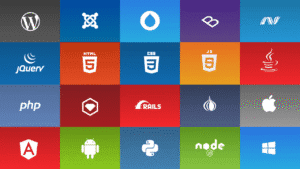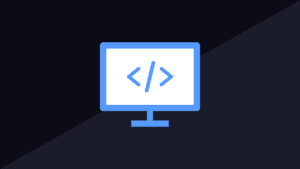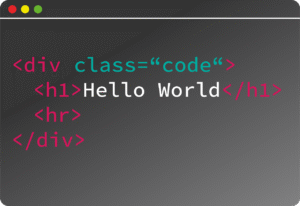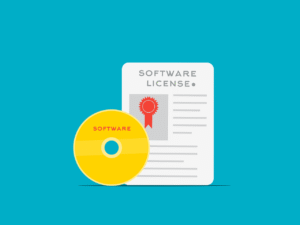
Is Being a Fullstack Web Developer Still a Future-Proof Career in 2024?
Introduction
Web development changes fast. New tools, frameworks, and trends pop up every year. It makes some wonder: is being a fullstack web developer still a smart choice? This role mixes frontend and backend work. That means you can build complete projects from scratch. But with tech shifting so quickly, is this career safe over the long run?
In today’s job market, being flexible and learning new skills matters most. Companies like startups and small businesses want developers who can do many things. Still, challenges like fierce competition and rapid tech changes exist. In this article, we’ll explore why fullstack development might still be a smart move—and when it might require extra effort to stay relevant.
The Current State of Fullstack Web Development
Market Demand and Job Growth Trends
Fullstack developers are in high demand now. According to LinkedIn, the number of fullstack job posts grew nearly 20% last year. The Stack Overflow Developer Survey shows many developers prefer fullstack roles because they get to wear multiple hats.
Industries like eCommerce, tech startups, and digital agencies hire many fullstack developers. These roles often appear in small teams that need versatile workers. Reports predict this demand will stay strong over the next five to ten years. Digital transformation continues, and companies need engineers who can handle all parts of a project.
Skill Set and Versatility
What skills make a good fullstack developer? It includes knowledge of frontend frameworks like React or Angular, backend systems such as Node.js or Django, databases like MySQL or MongoDB, and tools for deploying apps (DevOps).
Being a “one-stop shop” helps companies reduce costs. They don’t have to hire separate specialists for each part. Several companies praise fullstack pros for bringing quick solutions and full project understanding. This makes you more adaptable and valuable in many settings.
Salary Expectations and Career Progression
Fullstack developers earn solid wages now. Entry-level salaries hover around $70,000, with more experienced developers making $120,000 or more. When compared to frontend-only or backend-only roles, fullstack often pays a little higher because of broader skills.
Career paths open up into roles like tech lead, systems architect, or manager. With experience, you could also move into consulting or start your own freelance business. Building technical skills combined with soft skills like communication boosts growth opportunities.
Advantages of a Fullstack Career in the Future
Flexibility and Adaptability
Being versatile means you can switch between different projects and tech stacks easily. If one framework becomes outdated, you can learn a new one fast. This adaptability especially helps in startups, where priorities shift rapidly.
To stay relevant, keep learning. Explore new JavaScript frameworks, cloud tools, or testing methods regularly. Do that, and your skills will stay fresh no matter what the market demands.
Startups and Small Business Adoption
Small companies love fullstack developers because they can handle diverse tasks. In a fast-moving startup, one person might develop the whole app, from frontend design to server setup. This saves time and money.
Big corporations still hire fullstack pros, but startups and small teams often show a higher demand for these multi-talented developers. Staying flexible means you’re more marketable in these environments.
Broad Skill Portfolio as an Asset
Fullstack knowledge opens doors for end-to-end work. You can build entire apps, set up servers, and create user interfaces. That’s a big advantage for freelance work or entrepreneurship.
To impress employers or clients, showcase your projects. A well-rounded portfolio demonstrates you understand the entire development cycle.
Challenges and Limitations Facing Fullstack Developers
Rapid Technological Changes
Tech moves quickly. Frameworks, languages, and tools can become outdated fast. If you don’t keep learning, your skills can become obsolete. Staying ahead requires consistent effort.
Continuous learning is key. Follow blogs, join developer communities, attend workshops, or pursue certifications. Staying updated makes your skills sticky and valuable.
Competition and Market Saturation
More developers now learn fullstack skills. That means competition is fierce. To stand out, consider niche areas or certifications. Specializing in a certain tech, such as cloud infrastructure or a new JavaScript library, can boost your market value.
Building a unique skill set sets you apart from the crowd.
Potential for Overextension
Trying to do everything can backfire. When you spread yourself too thin, you might not master any one skill deeply. This can hurt your confidence and reputation.
One way to avoid this is to gain broad experience early on. Later, choose a niche where you can excel. It’s better to be a strong generalist who specializes later.
Future Trends Impacting Fullstack Development
Emergence of Low-Code/No-Code Platforms
Tools like Webflow or Bubble let non-developers build websites or apps in minutes. These platforms automate coding tasks. As they grow more powerful, demand for traditional fullstack coding might slow down.
But expert developers will still be needed for complex projects or custom solutions. Understanding these tools can be a bonus.
Advances in AI and Automated Coding
AI tools like GitHub Copilot can generate code snippets automatically. Testing and debugging are also becoming easier with automation. This could change how much manual coding is required.
However, human oversight and problem-solving will remain critical. Fullstack developers who understand the basics will still be in demand.
Growing Importance of DevOps and Cloud Skills
Deploying and managing apps on cloud platforms such as AWS, Azure, or GCP is now essential. Developers need to understand CI/CD pipelines and containerization tools like Docker.
Acquiring cloud skills makes you more valuable. These skills blend perfectly with fullstack capabilities.
Embracing New Technologies
Trends like Web3, progressive web apps (PWAs), and micro frontends are shaping the future. Staying ahead involves continuous learning, attending webinars, and obtaining relevant certifications.
Being an early adopter can give you a competitive edge.
Is a Fullstack Web Developer Still a Future-Proof Career?
Summarizing the Key Arguments
Fullstack development offers versatility and constant learning. While tech changes fast, fresh skills make you adaptable. Staying updated is your best defense against becoming obsolete.
Expert Opinions and Industry Insights
Many industry leaders say fullstack skills are still highly valuable. Major tech companies seek developers who can understand the entire product. They often prefer workers with broad knowledge and quick learning ability.
Practical Recommendations for Aspiring and Current Developers
Start by mastering core skills like HTML, CSS, JavaScript, and server basics. Then, explore new frameworks and cloud tools. Create projects to build a strong portfolio. Later, consider specializing in a niche area to stand out.
Remember, being adaptable and willing to learn is what keeps your career future-proof.
Conclusion
The role of a fullstack web developer remains relevant in 2024. Its flexibility makes it a strong choice, especially in a fast-changing tech world. But staying on top requires continuous learning and willingness to adapt.
A future-proof career isn’t just about skills today; it’s about growing with the industry. Keep updating your toolkit, explore new tech, and diversify your expertise. If you do, fullstack development can still serve as a rewarding, long-term career path.
Start now—evaluate your skills, follow the latest trends, and invest in lifelong learning. Your future as a fullstack web developer is still bright.



































































































